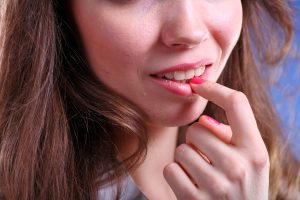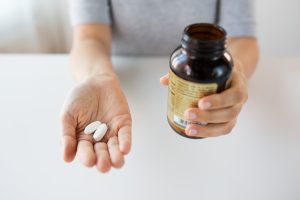Yeast infections are common and are caused by an overgrowth of fungus in the infected location. Various types of organisms live and reproduce on your skin. Most of these organisms are not harmful to you and aid the body in carrying out most of its normal functions. However, these bacteria or fungi can cause skin infections when they uncontrollably reproduce in excessive quantities on the skin. Candidiasis is caused by the overgrowth of a fungus called candida and can occur on the skin. This article discusses yeast infection in skin folds, its symptoms, causes, treatments, and frequent queries. Read on to learn more about yeast infection in skin folds.
Candidiasis and the skin
As previously mentioned, candida infections are caused by an overgrowth of the fungus candida.
The candida fungus is one of the fungi present on the skin. This organism can be harmful when it reproduces excessively on the skin.
This condition is called cutaneous candidiasis or candidiasis of the skin.
This infection is usually characterized by a red, itchy rash, most commonly in skin folds. The symptoms of this infection are typically easy to treat with antifungal creams and better hygiene.
You must inform your doctor if you notice an unusual inflammation or coloring of your skin. This rash may also spread to other parts of the body.
Read also: Everything You Should Know About Yeast Infection Skin Rash
Is yeast infection in skin folds a fungal infection?
The excess reproduction of the fungi candida causes skin candidiasis. This infection is quite common and can occur on any part of the skin.
However, skin candidiasis mainly occurs in warm, moist, folded areas such as the groin and armpits.
The fungus most responsible for this infection is Candida albicans.
Causes of skin candidiasis
Candidiasis is usually caused by candida fungus on the skin. There are a variety of organisms, including fungi and bacteria, that live on the skin.
Sometimes, these organisms benefit the skin’s health, while some don’t harm or provide any benefit.
Some microorganisms can be hazardous to the skin when they multiply out of proportion.
Fungal infections are typically triggered by fungi that remain on the hair, nails, and outer skin layers.
The fungi candida is known to cause yeast overgrowth infections. When they reproduce in excess, they can get beneath the skin’s surface to cause an infection.
Candida is most commonly responsible for skin rash in newborns because the fungi thrive in the warm, moist environment of the diaper.
In addition, people with diabetes and obesity typically get candidiasis due to these fungi.
Candida can also cause infections of the corners of the mouth, the edges of the nails, and the nails.
Furthermore, oral thrush is a form of candida that can occur when people use antibiotics. Using antibiotics is one of the predisposing factors to this infection. This is not a common occurrence, however.
Candida infections are usually not contagious, though some people with weakened immune systems have higher risk factors of getting infected.
Symptoms of skin candidiasis
Yeast infection is typically caused by yeast on the mucous membranes or skin. The symptoms of this infection depend on the location of the infection in the body.
The most common symptoms of the infection can range from a skin rash to inflamed hair follicles.
Some of the symptoms include the following:
- Intense itching of the skin
- Red rash on the skin
- Rash on the buttocks, genitals, skin folds, under the breast, and other parts of the skin
- Hair follicle infection that may resemble pimples
How to know if you have a yeast infection in skin folds
You should immediately contact your doctor if you notice anything unusual about your skin. Your healthcare expert can tell if you have this condition by examining the site of the symptom on your skin.
Your healthcare expert may gently scrape a sample of your skin for examination and testing.
High sugar levels in diabetic patients act as a catalyst for yeast fungus, helping them grow.
Adults and older children with skin candidiasis should be tested for diabetes.
How to treat skin candidiasis
Maintaining good hygiene to treat candidiasis of the skin is essential. Skin candidiasis can be easily treated with antifungal ointments, creams, or other alternative treatments.
Ensure to keep your skin exposed to air and dry for effective treatment. Antifungal powders are also highly effective against skin candidiasis.
In addition, obese people can reduce the probability of candidal intertrigo by losing weight, and adequate blood sugar control can benefit diabetic people and prevent intertrigo.
Antifungal ointments and creams are used as topical treatment options. It would help if you discussed it with a qualified healthcare provider before using any medication to be sure it is suitable and appropriate.
When to see a doctor
Speaking to qualified medical personnel is crucial if you notice symptoms of an infection on your skin.
It would be best to inform your healthcare provider of any unusual development on your skin or body.
Your doctor can examine and test samples of your skin and make a differential diagnosis to determine if you have an infection.
The following complications may occur on the skin:
- Skin infection may recur
- Skin candidiasis can spread from one part of the skin to other parts, especially in people with weak immune systems.
- Infection of the nails may cause the fingers to become deformed and oddly shaped.
Frequently Asked Questions
Fungal infections are typically caused by fungi that live on the skin. These infections occur when there is an overproduction of candida fungus on the skin.
Candida albicans usually cause candida infections on the skin.
A red, itchy rash usually characterizes skin candidiasis.
Cutaneous candidiasis can occur in parts of the body with folds such as armpits and groin.
Your doctor will recommend an antifungal ointment or cream to treat this infection in the armpit.
Some common antifungal ointments include clotrimazole and miconazole.
Getting rid of a yeast infection is uncomplicated. Your doctor will recommend an antifungal cream or ointment for your treatment. They are very effective against this skin infection.
However, there are home remedies you can use as a tactic to eliminate the infection. Some of these remedies include:
Wear breathable fabrics and loose-fitting clothes like cotton
Use a gentle deodorant in your armpit to minimize sweating
Use talcum powder as a drying agent on the affected area
Do not use powder simultaneously with antifungal ointments





